
Proserpine (Proserpina) is an opera with music by Jean-Baptiste Lully and a libretto by Philippe Quinault first performed at Saint-Germain-en-Laye on 3 February 1680. [1]

Proserpine (Proserpina) is an opera with music by Jean-Baptiste Lully and a libretto by Philippe Quinault first performed at Saint-Germain-en-Laye on 3 February 1680. [1]
| Role | Voice type | Premiere cast, 3 February 1680 |
|---|---|---|
| Prologue | ||
| La Paix (Peace) | soprano | Catherine Ferdinand |
| La Félicité (Felicitas) | soprano | Mlle Rebel |
| L'Abondance (Abundantia) | soprano | Mlle Puvigné (or Puvigny) |
| La Discorde (Discord) | tenor (en travesti) | Puvigné (or Puvigny) |
| La Victoire (Victoria) | soprano | Claude Ferdinand |
| Tragédie | ||
| Pluton (Pluto) | bass | Jean Gaye |
| Ascalaphe (Ascalaphus), son of Acheron, confidant of Pluton | bass | Antoine Morel |
| Proserpine | soprano | Claude Ferdinand |
| Cérès (Ceres) | soprano | Mlle de Saint-Christophe (or Saint-Christophle) |
| Jupiter | bass | Godonesche |
| Alphée (Alpheus) | haute-contre | Bernard Cledière |
| Aréthuse (Arethusa) | soprano | Catherine Ferdinand |
| Mercure (Mercury) | tenor | Langeais |
| Cyané, a Sicilian nymph, confidante of Cérès | soprano | Mlle Bony |
| Crinise, god of the Sicilian river Crinisus | basse-taille | Arnoul |
| Furies | 2 tenors and a basse-taille(?) | Claude Desvoyes, Puvigny (or Puvigné) and Le Maire |
| A blessed spirit | soprano | |
Based on Ovid's Metamorphoses , the plot centers around the abduction of Proserpine by Pluton, with side plots concerning Cérès's love for Jupiter and the love intrigue between Alphée and Aréthuse.

Henri Desmarets was a French composer of the Baroque period primarily known for his stage works, although he also composed sacred music as well as secular cantatas, songs and instrumental works.

Isis is a French opera in a prologue and five acts with music by Jean-Baptiste Lully and a libretto by Philippe Quinault, based on Ovid's Metamorphoses. The fifth of Lully's collaborations with Quinault, it was first performed on 5 January 1677 before the royal court of Louis XIV at the Château de Saint-Germain-en-Laye and in August received a run of public performances at the Théâtre du Palais-Royal. It was Lully's first published score ; a full score was published in 1719.

Bellérophon is an opera with music by Jean-Baptiste Lully and a libretto by Thomas Corneille and Bernard le Bovier de Fontenelle first performed by the Opéra at the Théâtre du Palais-Royal in Paris on 31 January 1679.

Psyché is an opera in a prologue and five acts composed by Jean-Baptiste Lully to a libretto by Thomas Corneille. Based on the love story of Cupid and Psyche, Psyché was premiered on April 19, 1678 by the Académie Royale de Musique at the Théâtre du Palais-Royal in Paris.

Achille et Polyxène is a tragédie lyrique containing a prologue and five acts based on Virgil's Aeneid with a French libretto by Jean Galbert de Campistron. The opera's overture and first act were composed by Jean-Baptiste Lully, who died from a conducting injury before he could complete the score. The prologue and the remaining acts are the work of his pupil Pascal Collasse who finished the work, eight months after Lully's death on 22 March 1687. Acts 1 and 4 of the ballet was created by Louis Lestang, and the ballet to the prologue and acts 2 and 3 were by Louis-Guillaume Pécour. The opera was first performed on 7 November 1687, by the Paris Opera at the Théâtre du Palais-Royal in Paris.
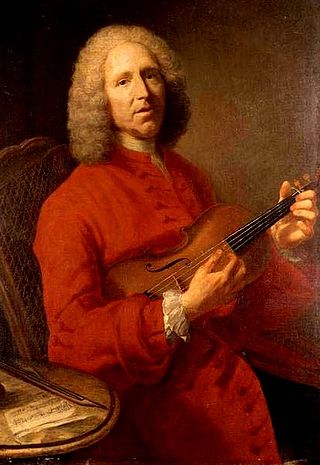
Zoroastre (Zoroaster) is an opera by Jean-Philippe Rameau, first performed on 5 December 1749 by the Opéra in the first Salle du Palais-Royal in Paris. The libretto is by Louis de Cahusac. Zoroastre was the fourth of Rameau's tragédies en musique to be staged and the last to appear during the composer's own lifetime. Audiences gave the original version a lukewarm reception, so Rameau and his librettist thoroughly reworked the opera for a revival which took place at the Opéra on 19 January 1756. This time the work was a great success and this is the version generally heard today.

Les fêtes de Polymnie is an opéra-ballet in three entrées and a prologue by Jean-Philippe Rameau. The work was first performed on 12 October 1745 at the Opéra, Paris, and is set to a libretto by Louis de Cahusac. The piece was written to celebrate the French victory at the Battle of Fontenoy in the War of the Austrian Succession. It was revived at the same venue on 21 August 1753.

Ercole amante is an opera in a prologue and five acts by Francesco Cavalli. Its Italian libretto is by Francesco Buti, based on Sophocles' The Trachiniae and on the ninth book of Ovid's Metamorphoses. The first performance took place on 7 February 1662 in the Salle des Machines of the Tuileries in Paris.

Alcine is an opera by the French composer André Campra. It takes the form of a tragédie en musique in a prologue and five acts. The libretto, by Antoine Danchet, is based on cantos IV, VI and VII of Ariosto's epic poem Orlando furioso and tells of the love of the enchantress Alcine for the paladin Astolphe (Astolfo).
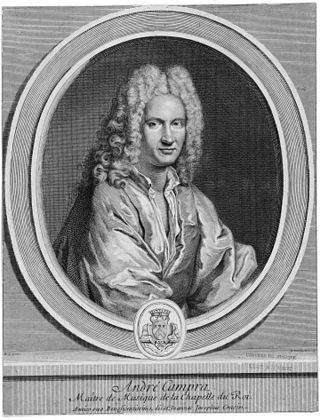
Hésione is an opera by the French composer André Campra. It takes the form of a tragédie en musique in a prologue and five acts. The libretto, by Antoine Danchet, is based on the Greek myth of Hesione and Laomedon.

Iphigénie en Tauride is an opera by the French composers Henri Desmarets and André Campra. It takes the form of a tragédie en musique in a prologue and five acts. The libretto is by Joseph-François Duché de Vancy with additions by Antoine Danchet. Desmarets had begun work on the opera around 1696 but abandoned it when he was forced to go into exile in 1699. Campra and his regular librettist Danchet took up the piece and wrote the prologue, most of Act Five, two arias in Act One, an aria for Acts Two and Three, and two arias for the fourth act. The plot is ultimately based on Euripides' tragedy Iphigeneia in Tauris.
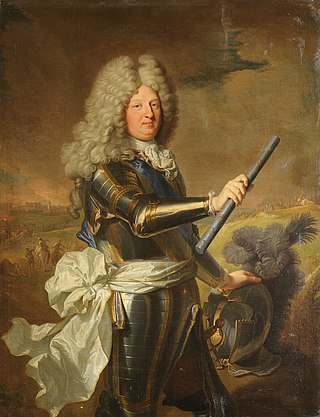
Le carnaval de Venise is a comédie-lyrique in a prologue and three acts by the French composer André Campra. The libretto is by Jean-François Regnard. It was first performed on 20 January 1699 by the Académie royale de musique in the Salle du Palais-Royal in Paris. Campra dedicated the work to Louis, Grand Dauphin, heir apparent to the French throne, who enjoyed it and had it staged again in February 1711, shortly before his death. In one critic's assessment: "In a magisterial act of conflation, this composer blends the styles of Lully, Lalande, Monteverdi and Cavalli and manages also to foreshadow Handel and Rameau. He dreamt up a multi-hued score, capable of recapturing in Paris both the carnival spirit in general and that of the legendary Venice in particular."
Les âges or Le ballet des âges is an opéra-ballet in a prologue and three acts by the French composer André Campra. The libretto is by Louis Fuzelier. It was first performed by the Académie royale de musique at the Théâtre du Palais-Royal on 9 October 1718.

La caverne, ou Le repentir is an opera in three acts by French composer Jean-François Le Sueur. It was first performed at the Théâtre Feydeau, Paris, on 16 February 1793. The libretto, by Alphonse François "Paul" Palat-Dercy, is based on an episode from Lesage's novel Gil Blas. La caverne was the first opera by Le Sueur to be staged and it became one of the most popular works of the French Revolutionary era. The opera was notable for its innovative set design: the stage was divided horizontally, with the lower section representing the cavern of the title and the upper section showing a forest. Two levels of action were thus able to be shown simultaneously.
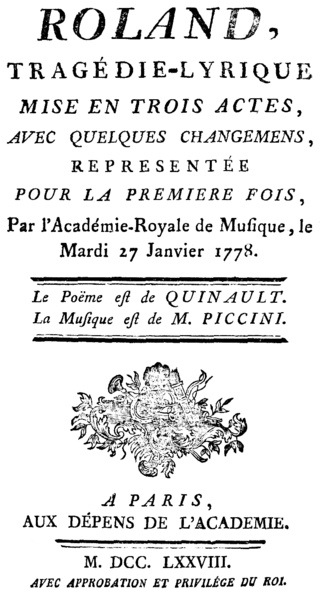
Roland is a tragédie lyrique in three acts by the composer Niccolò Piccinni. The opera was a new setting of a libretto written by Philippe Quinault for Jean-Baptiste Lully in 1685, specially adapted for Piccinni by Jean-François Marmontel and based on Ludovico Ariosto's epic poem Orlando Furioso. The opera was first performed on 27 January 1778 by the Académie Royale de Musique at the Théâtre du Palais-Royal.

Atys is a tragédie lyrique in three acts by Niccolò Piccinni with a French libretto by Jean-François Marmontel. Marmontel's libretto was based upon Philippe Quinault's libretto for Jean-Baptiste Lully's 1676 opera of the same title. Quinault based his rendition on Ovid's Fasti. Marmontel adapted Quinault's libretto and modified it by removing the prologue and divertissements. He also altered the plot; instead of using Ovid's metamorphic ending, Atys commits suicide. Piccinni's opera was premiered by the Paris Opera at the second Salle du Palais-Royal on 22 February 1780. Musically the opera is admired for its fugal overture, the dream sequence in act 2, the long quartet at the dramatic climax, and the somber dirge with which it ends.
Orfeo (Orpheus) is an opera in three acts, a prologue and an epilogue by the Italian composer Luigi Rossi. The libretto, by Francesco Buti, is based on the myth of Orpheus and Eurydice. Orfeo premiered at the Théâtre du Palais-Royal in Paris on 2 March 1647. It was one of the earliest operas to be staged in France.

Callirhoé is an opera by the French composer André Cardinal Destouches. It takes the form of a tragédie en musique in a prologue and five acts. The libretto, by Pierre-Charles Roy, is based on a story from The Description of Greece by Pausanias. The opera was first performed on December 27, 1712, by the Académie royale de musique at the Théâtre du Palais-Royal in Paris. Destouches reworked the score for a revival on 22 October, 1743. This version ends abruptly with the death of Corésus.
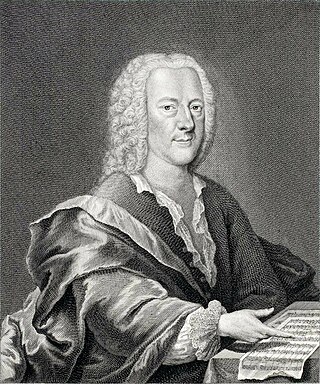
Orpheus is an opera in three acts by the German composer Georg Philipp Telemann. It was first performed in a concert version at the Oper am Gänsemarkt in Hamburg on 9 March 1726. The anonymous libretto is based on the 1690 opera Orphée by Michel Duboullay, originally set by the French composer Louis Lully. Most of the work is in German but it also contains passages in French and Italian drawn from famous operas by Handel and Jean-Baptiste Lully. The music to these words is Telemann's own, however. The manuscript score of Telemann's Orpheus was not rediscovered until the late 20th century.
Tigrane, o vero L'egual impegno d'amore e di fede is an opera seria in three acts by the Italian composer Alessandro Scarlatti with a libretto by Domenico Lalli. It was first performed at the Teatro San Bartolomeo, Naples, on 16 February 1715. It is regarded as one of Scarlatti's finest operas. As well as the serious main plot, there are also comic scenes involving the servants Dorilla and Orcone.